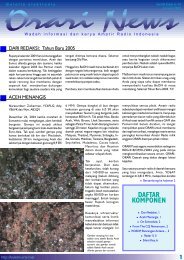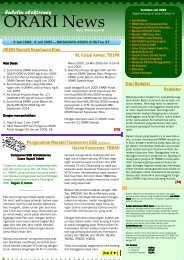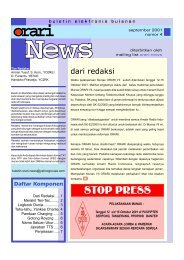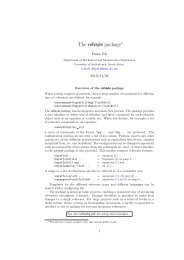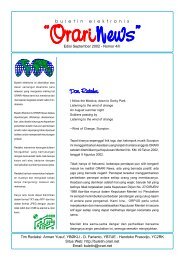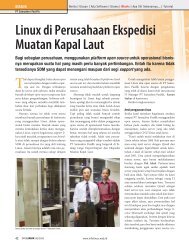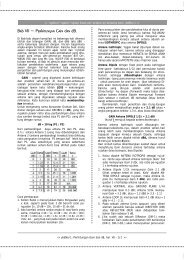You also want an ePaper? Increase the reach of your titles
YUMPU automatically turns print PDFs into web optimized ePapers that Google loves.
typically 66 percent, and stage gain is about 20 to 25 dB. Class B is<br />
used widely in audio amplifier applications, such as modulators for<br />
high level amplitude modulation.<br />
A Class C power amplifier is used where large amounts of<br />
r–f power are to be generated with high efficiency. A Class C<br />
amplifier operates much like a limiter; therefore, it cannot amplify<br />
a modulated driver without serious distortion. Class C amplifiers<br />
are used for high level amplitude modulation wherein the anode<br />
voltage, or anode and screen voltage for tetrodes, is varied at an<br />
audio rate. Class C amplifiers must be used with tuned circuits or<br />
with a commutating output circuit with filtering. Class C cannot be<br />
used in a normal audio amplifier circuit.<br />
3.2 TUBE PERFORMANCE COMPUTER FOR R-F<br />
AMPLIFIERS<br />
It is quite easy to closely estimate the performance of a vacuum tube<br />
in radio-frequency power amplifier service, or an approximation in<br />
the case of harmonic amplifier service. Such estimates will give<br />
r-f output power, d-c input power, grid driving power, and all d-c<br />
current values.<br />
These estimates can be easily made by using the EIMAC <strong>Tube</strong><br />
Performance Computer. This can be obtained at no cost by<br />
writing to: Application Engineering Department, CPI, EIMAC<br />
Division, 301 Industrial Road, San Carlos, CA 94070 USA. The<br />
computer is used with the characteristic curves of the tube,<br />
as plotted on the anode voltage/grid voltage coordinates<br />
(constant current curves).<br />
By graphically laying out the trace of the anode and grid voltages as<br />
they rise and fall about the applied d-c anode voltage and d-c grid<br />
bias, a clear understanding of the action taking place within a tube<br />
is possible. With such an understanding, the operating conditions<br />
can be readily altered to suit individual requirements.<br />
3.2.1 Simple Action in Class C R-F Amplifiers<br />
In an amplifier varying voltage is applied to the control grid of<br />
the tube. Simultaneously the anode voltage will vary in a similar<br />
manner, due to the action of the amplified current flowing in the<br />
anode circuit. In radio-frequency applications with resonant circuits,<br />
33




